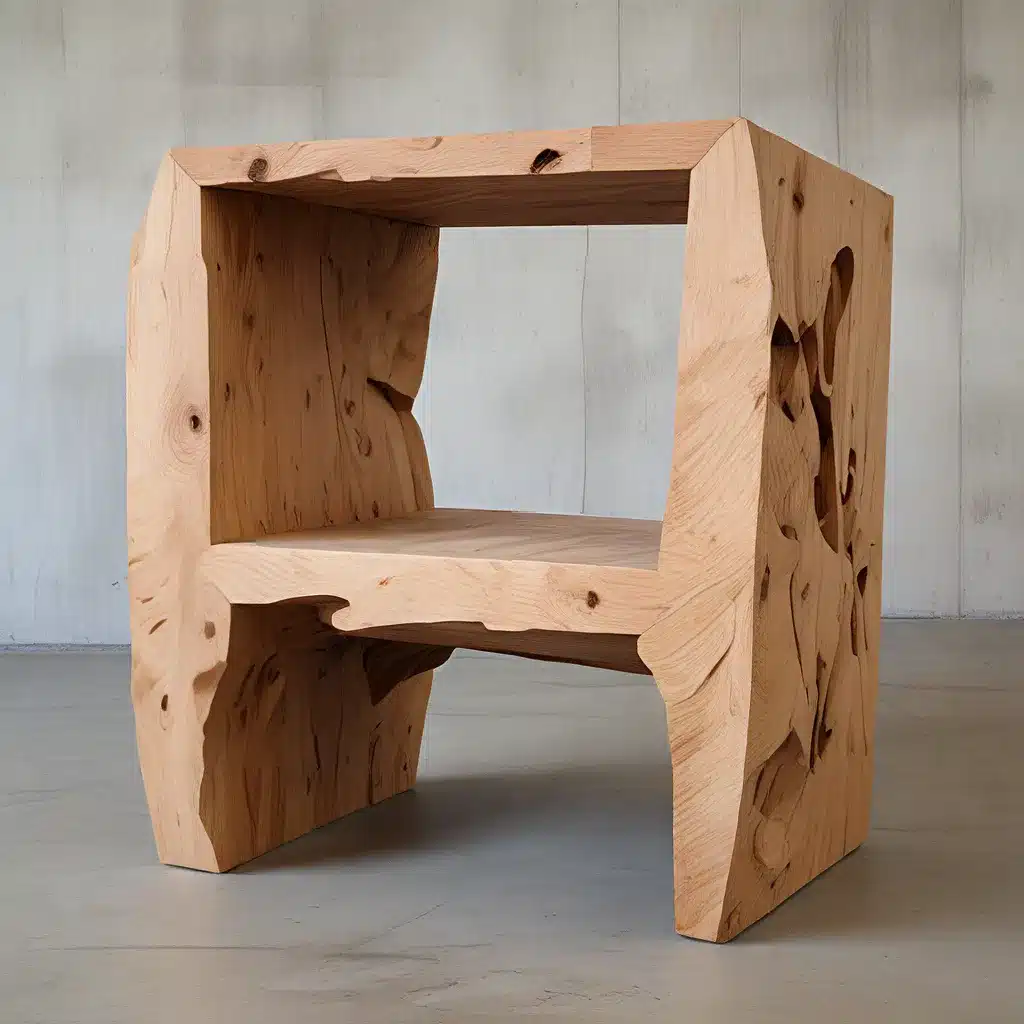
In the ever-evolving world of interior design, the boundaries between art and functionality are becoming increasingly blurred. Furniture is no longer just a practical necessity; it has evolved into a canvas for artistic expression, transforming living spaces into visually captivating environments. This article explores the captivating trend of sculptural furniture and how homeowners can integrate these functional art pieces into their homes to create a harmonious balance of style and substance.
Redefining the Role of Furniture
Gone are the days when furniture was solely a means to an end. Today’s leading designers are pushing the envelope, reimagining everyday objects as sculptural masterpieces. Furniture is no longer simply a vessel for utility; it has become a statement piece, a visual centerpiece that commands attention and captivates the senses.
Jamie Weinfurter, a renowned artist, eloquently captures this sentiment, stating, “My practice has evolved into interactive large-scale sculptural installations that are assembled from found objects, prints of everyday life, and community-engaged research. The memories and histories associated with discarded household objects are materials in my installations that discuss consumer culture, unsustainable materialism, arts accessibility, queer world-building, and homemaking.”
This ethos of repurposing everyday items into remarkable works of art has become a driving force in the world of interior design. Homeowners and design enthusiasts alike are embracing the opportunity to elevate their living spaces with functional art installations that challenge preconceived notions of form and function.
Sculptural Furniture: Blurring the Lines between Art and Design
One of the most captivating aspects of this trend is the way in which designers are redefining the role of furniture. Piers Henry, a renowned artist, is known for his bespoke furniture designs that “epitomize the fusion of craftsmanship and artistic vision, transforming functional objects into pieces of art.” His creations, which often utilize unconventional materials like steel, concrete, and glass, seamlessly blend industrial aesthetics with artisanal craftsmanship.
By incorporating these sculptural furniture pieces into their homes, homeowners can create a dynamic and visually captivating living environment. A bespoke steel and glass coffee table, for instance, can serve as a conversation starter in a modern living room, while a concrete shelving unit can add a minimalistic yet robust touch to a space, blending effortlessly with a variety of interior design styles.
Embracing the Unexpected: Sculptural Furniture as Focal Points
Sculptures and furniture have traditionally been regarded as distinct entities, with the former occupying a more elevated, artistic realm and the latter serving a purely functional purpose. However, contemporary artists and designers are challenging this notion, blurring the lines between the two disciplines.
Richard Artschwager’s Table with Pink Tablecloth, for example, is a prime example of how a functional object can be transformed into a sculptural masterpiece. Artschwager’s work, which features a “big smooth cube” that serves no practical purpose as a table, challenges the viewer’s perception of art and utility.
By incorporating such unconventional furniture designs into their homes, homeowners can create a sense of intrigue and surprise. These sculptural pieces serve as focal points, drawing the eye and inviting closer inspection. They become conversation starters, engaging visitors and encouraging them to reevaluate their understanding of the relationship between art and everyday objects.
Elevating the Everyday: Sculptural Furniture as Centerpieces
Sculptural furniture offers homeowners the opportunity to elevate the everyday and transform their living spaces into visually captivating environments. Whether it’s a large-scale public sculpture or a bespoke piece for the home, these works of art have the power to enhance the aesthetic appeal of a space and convey a sense of sophistication and creativity.
Weinfurter suggests that these sculptural installations can “reclaim engendered objects, themes, and roles,” allowing homeowners to challenge societal norms and redefine the purpose of everyday items. By embracing this approach, homeowners can create a truly unique and personalized living environment that reflects their individual style and artistic sensibilities.
Integrating Sculptural Furniture: Practical Tips and Considerations
Incorporating sculptural furniture into your home’s design requires careful planning and consideration. Here are some practical tips to help you seamlessly integrate these functional art pieces into your living spaces:
-
Scale and Proportion: Consider the size and scale of the sculptural furniture in relation to the room’s dimensions and existing furnishings. Ensure that the piece complements the space without overwhelming it.
-
Material Harmony: Choose sculptural furniture that complements the overall material palette and aesthetic of your home. Opt for pieces that blend harmoniously with the surrounding decor.
-
Focal Point Placement: Position the sculptural furniture as a focal point within the room, drawing the eye and creating a captivating visual experience.
-
Lighting Considerations: Enhance the sculptural qualities of the furniture by strategically placing lighting fixtures that highlight its unique features and textures.
-
Personalization: Collaborate with artists or designers to customize the sculptural furniture to suit your specific needs and design preferences, ensuring a truly one-of-a-kind piece.
By thoughtfully incorporating sculptural furniture into their homes, homeowners can transform their living spaces into visually captivating environments that reflect their personal style and artistic sensibilities. This trend not only elevates the everyday but also challenges traditional notions of form and function, inviting homeowners to embrace the unexpected and experience the joy of living with functional art installations.

